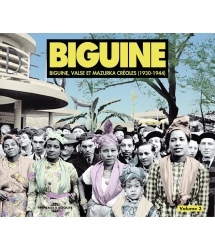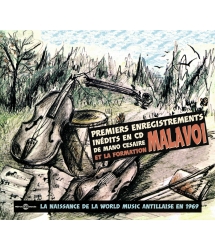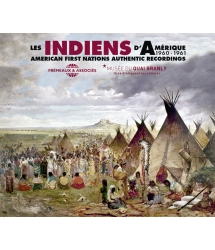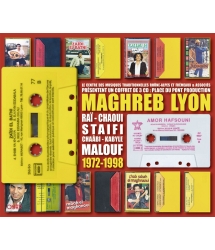- Our Catalog
- Philosophy
- Philosophers of the 20th century and today
- History of Philosophy (PUF)
- Counter-History and Brief Encyclopedia by Michel Onfray
- The philosophical work explained by Luc Ferry
- Ancient thought
- Thinkers of yesterday as seen by the philosophers of today
- Historical philosophical texts interpreted by great actors
- History
- Books (in French)
- Social science
- Historical words
- Audiobooks & Literature
- Our Catalog
- Jazz
- Blues
- Rock - Country - Cajun
- French song
- World music
- Africa
- France
- Québec / Canada
- Hawaï
- West Indies
- Caribbean
- Cuba & Afro-cubain
- Mexico
- South America
- Tango
- Brazil
- Tzigane / Gypsy
- Fado / Portugal
- Flamenco / Spain
- Yiddish / Israel
- China
- Tibet / Nepal
- Asia
- Indian Ocean / Madagascar
- Japan
- Indonesia
- Oceania
- India
- Bangladesh
- USSR / Communist songs
- World music / Miscellaneous
- Classical music
- Composers - Movie Soundtracks
- Sounds of nature
- Our Catalog
- Youth
- Philosophy
- News
- How to order ?
- Receive the catalog
- Manifesto
- Dictionnary











- Our Catalog
- Philosophy
- Philosophers of the 20th century and today
- History of Philosophy (PUF)
- Counter-History and Brief Encyclopedia by Michel Onfray
- The philosophical work explained by Luc Ferry
- Ancient thought
- Thinkers of yesterday as seen by the philosophers of today
- Historical philosophical texts interpreted by great actors
- History
- Books (in French)
- Social science
- Historical words
- Audiobooks & Literature
- Our Catalog
- Jazz
- Blues
- Rock - Country - Cajun
- French song
- World music
- Africa
- France
- Québec / Canada
- Hawaï
- West Indies
- Caribbean
- Cuba & Afro-cubain
- Mexico
- South America
- Tango
- Brazil
- Tzigane / Gypsy
- Fado / Portugal
- Flamenco / Spain
- Yiddish / Israel
- China
- Tibet / Nepal
- Asia
- Indian Ocean / Madagascar
- Japan
- Indonesia
- Oceania
- India
- Bangladesh
- USSR / Communist songs
- World music / Miscellaneous
- Classical music
- Composers - Movie Soundtracks
- Sounds of nature
- Our Catalog
- Youth
- Philosophy
- News
- How to order ?
- Receive the catalog
- Manifesto
- Dictionnary
BANDE ORIGINALE DU FILM DE STÉPHANE JOURDAIN
Ref.: FA5056
Artistic Direction : DEBEN BHATTACHARYA
Label : Frémeaux & Associés
Total duration of the pack : 1 hours 14 minutes
Nbre. CD : 1
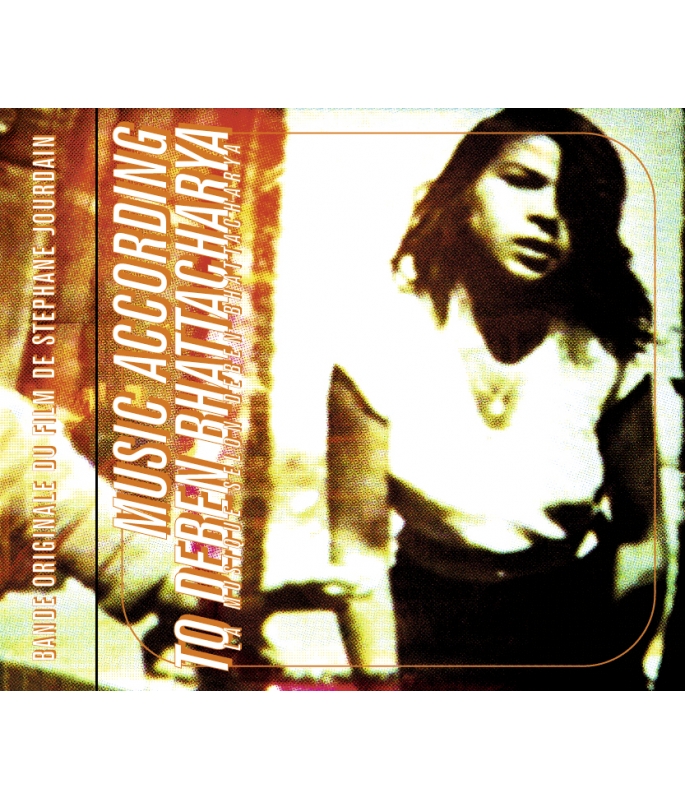
BANDE ORIGINALE DU FILM DE STÉPHANE JOURDAIN
- - RECOMMANDÉ PAR ÉCOUTER VOIR
- - RECOMMANDÉ PAR TÉLÉRAMA
- - PRIX DE L’ACADÉMIE CHARLES CROS
- - RECOMMANDÉ PAR PHONOSCOPIE
- - “BRAVO“ TRAD MAGAZINE
- - SÉLECTION NOËL TÉLÉRAMA
BANDE ORIGINALE DU FILM DE STÉPHANE JOURDAIN
World music compilation. All tracks recorded by Deben Bhattacharya who died a few years ago. Born in India, Deben became a journalist and producer for the BBC. In the late 1950's he recorded live some unique examples and testimonies of traditional music, released in this record. Includes a 12 page booklet with both French and English notes.
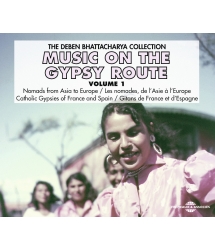
DEBEN BHATTACHARYA COLLECTION
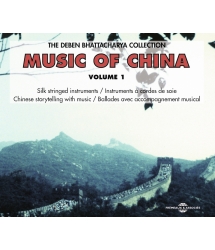
DEBEN BHATTACHARYA COLLECTION

BANDE ORIGINALE DU FILM DE STÉPHANE JOURDAIN



-
PisteTitleMain artistAutorDurationRegistered in
-
1BIHAGCHANDRA CHOWDHURITRADITIONNEL00:07:001954
-
2SOLEARESTRADITIONNEL00:01:351955
-
3CHANSON POUR LE JOUR DE FETE DE SARATRADITIONNEL00:09:301955
-
4PROCESSION PASCALETRADITIONNEL00:10:301956
-
5CHANSON D AMOUR BEDOUINETRADITIONNEL00:01:301955
-
6PONTIAGO TIGTRIGTRADITIONNEL00:02:351961
-
7MAQAM SEEKAMAHMAN MEIRTRADITIONNEL00:06:301957
-
8ESAT EUROPEAN WEDDING DANCESISRAELI POLICE BANDTRADITIONNEL00:04:151957
-
9HICHKIMUHAMMADTRADITIONNEL00:04:201968
-
10NIJER NAYE NIJE HETE CHALSAFITRADITIONNEL00:04:471971
-
11CRYING SONGJOZSEFNE FERENCTRADITIONNEL00:07:301957
-
12CHANSON BAULALI SHAH TURAPTRADITIONNEL00:05:492001
-
13ANURUPA RAYSONARGOANTRADITIONNEL00:06:502001
-
14CHANSON POPULAIREBISWAS KATHATRADITIONNEL00:01:302002
La Musique selon Deben Bhattacharya FA5056
LA MUSIQUE
SELON DEBEN BHATTACHARYA
BANDE ORIGINALE DU FILM DE STÉPHANE JOURDAIN
MUSIC ACCORDING
TO DEBEN BHATTACHARYA
Loin c’est la porte à côte
J'ai rencontré Deben Bhattacharya en 1999. Un goût partagé pour les musiques traditionnelles, l’intérêt que je portais à son travail, ont décidé de notre amitié.
Sa biographie complète reste à faire. On comprendra en lisant ce qui suit, l'activité et le mouvement incessants qui ont animé sa vie, et que j’ai souhaité rendre sensibles dans mon film, la musique selon Deben Bhattacharya.
Né en 1921 à Bénarès d'une famille de brahmanes bengalie, Deben renonce très tôt à l'enseignement dispensé à l'école. Il ne supporte pas ce qu'il nomme le "No man's land" de son avenir : aller à l'université, puis travailler dans l'administration. Il quitte le domicile parental - “quitter mon domicile, c'est ce que j'ai fait toute ma vie” - et part sur les routes de l'Inde, vivant de petits boulots, puis revient à Bénarès et commence à travailler comme reporter pour des journaux et des magazines. Il fait la rencontre de Lewis Thompson, poète anglais, son double venu d’occident.
Thompson meurt en 1949, et Deben décide de quitter l'Inde pour l'Angleterre. Il débarque à Londres et travaille comme porteur pour diverses entreprises. Parallèlement, pour rester "mentalement actif", il continue de traduire vers l'anglais des poèmes en langue bengalie. Buddhadeva Bose, auteur moderne, dira : "il a fait de mes poèmes de seconde classe en bengali des poèmes de première classe en anglais".
À Londres, Deben commence à produire et animer des émissions en bengali pour la BBC. Il propose une série d'émissions sur la musique indienne, alors inexistante sur les ondes. L'idée est acceptée, mais Deben se rend compte que les enregistrements disponibles se comptent sur les doigts de la main (juste quelques 78 tours).
Il achète l'un des premiers magnétophones portables et, en 1954, retourne par bateau en Inde pour commencer ce qui deviendra vite l'activité principale de sa vie : l'enregistrement de terrain. Il revient à Londres avec des enregistrements inédits de musique classique du nord de l'Inde, de chants des poètes bauls (les “vagabonds de dieu”), et de musique populaire. Il restera producteur à la BBC pendant 15 ans.
Deben arrive à se faire inviter pour une lecture sur la musique indienne au musée Guimet, à Paris, et reçoit quelques jours plus tard deux télégrammes, l'un de la Boîte À Musique, l'autre du Club Français du Disque, qui lui proposent la publication de ses enregistrements.
Ce seront les deux premiers albums d'une collection de disques vinyles 33 tours qui en compte aujourd'hui un peu plus de 130.
À la fin des années 50, Deben se rend au pèlerinage des Saintes-Maries-de-la-Mer. Il est le premier à y enregistrer de la musique tzigane.
Du travail qu'il effectue en Andalousie, en Europe de l'Est et au Rajasthan, il fait entre autres un livre-disque, Gypsies, voices and faces, qui raconte, 30 ans avant Latcho Drom de Tony Gatlif, le cheminement musical des tziganes d'est en ouest.
En 1957, peu après la création d’Israël, il collecte les chants et les musiques des diverses communautés qui reviennent en Terre Sainte. En 1963/64, en pleine guerre froide, il traverse la Hongrie, la Bulgarie, la Tchécoslovaquie, la Roumanie, et enregistre des dizaines d'heures de musiques populaires.
En 1968, il achète une caméra Eclair 16 mm, et commence une série de vingt-deux films documentaires autour des "traditions vivantes" à Bali, au Sri Lanka, en Thaïlande, au Tibet, en Chine, mais aussi en Hongrie et en Roumanie.
En 1971, il est à Calcutta lorsque déferlent sur la ville 10 millions de réfugiés bengalis qui fuient les massacres perpétrés par l'armée pakistanaise au Pakistan oriental (futur Bangladesh). Il enregistre les réfugiés dans les camps.
Au milieu des années 80, il a accumulé environ 800 heures d'enregistrements, 16 000 photographies, 22 films, et publié une quinzaine d'ouvrages. Il a parcouru des dizaines de pays, traversé des centaines de villes et de villages.
Un travail de réédition en disques compacts de ses archives a été amorcé. Une soixantaine sont publiés à ce jour.
Deben est décédé le 23 juillet 2001, à Paris.
Les enregistrements présents sur ce disque sont issus de sa collection personnelle. La plupart ont déjà été réédités en disque compact, chez Frémeaux et Associés notamment. Certains sont inédits. Les commentaires de Deben Bhattacharya sur les enregistrements sont tirés de mon film.
1 Bihag
Jyotish Chandra Chowdhuri, Bénarès, 1954 7’
“À cette époque (vers 1950, ndlr), j’avais écrit à la BBC pour dire que j’étais surpris que la BBC n’ait jamais rien produit sur la musique indienne.
Comment est-il possible que, après plus de deux cents ans de contacts entre l’Angleterre et l’Inde, personne ne connaisse rien à la musique indienne ?
J’ai proposé trois programmes, un sur les Raga, un sur les musiques populaires, un autre sur les musiques de cinéma. Et c’est comme ça que j’ai découvert que les disques que j’avais à ma disposition n’étaient pas du tout adaptés. C’étaient des petits soixante-dix huit tours, qui duraient quatre minutes. Qu’est ce que tu peux jouer d’un Raga en quatre minutes ?
Alors j’ai acheté ce magnétophone qui pesait 35 kilos, et j’ai fait mon premier voyage en Inde pour enregistrer ces musiques. C’est comme ça que ça a commencé, ma vie consacrée à l’enregistrement.”
2 Soleares
Saintes-Maries-de-la-Mer, 1955 1’ 35
3 Chanson pour le jour de fete de Sara
Saintes-Maries-de-la-Mer, 1955 9’ 30
Dans le bateau qui le ramène de l’Inde vers l’Europe, Deben lit un ouvrage sur les gitans de Camargue. Quelques mois plus tard, il est au pèlerinage des Saintes-Maries-de-la-mer.
“C’était quelque chose d’extraordinaire. Ils étaient assez étranges, mais ressemblaient beaucoup aux gens que tu trouves en Inde du Nord, au Rajasthan ou dans l’Uttar Pradesh. Ils me demandaient si je connaissais des mots comme tchor, ou tchhouri, qui signifient voleur, couteau, exactement les mêmes mots qu’on utilise en Inde du Nord.
Ça les excitait aussi beaucoup de comparer ma peau avec la leur, mes cheveux aussi, et ils disaient, regarde, tu es l’un des nôtres.
J’ai été admis immédiatement, je pouvais marcher dans leur campement, m’asseoir, et parler avec eux dans mon mauvais français. Ils parlaient un bien mauvais français aussi, mais le mien était encore pire !
De cette façon, j’ai été le premier à réaliser des enregistrements de gitans en France.”
4 Procession Pascale
Séville, 1956 10’ 30
“Après ces enregistrements aux Saintes-maries-de-la-mer, j’ai décidé de partir en Andalousie. Les fêtes de Pâques avaient commencé. Je voulais enregistrer des processions, mais je voulais être au milieu de la procession. Ils m’ont dit non, tu ne peux pas, il te faudrait un costume. Alors, ils m’habillèrent en bon samaritain. Ils avaient posé une balance sur mon magnétophone qui fonctionnait sur batteries, et j’avais mon appareil photo autour du cou.”
5 Chanson d’amour bedouine
Damas, 1955 1’ 30
6 Pontiago ‘’Tig’’
Ntino Trig, Grèce, 1961 2’ 35
En 1955, ayant obtenu une avance d’une compagnie de disques, Deben s’achète un Van et part enregistrer, avec un ami, à travers l’Europe, le Proche et le Moyen-orient, jusqu’en Inde. Il refera ce même voyage au début des années 60.
7 Maqam Seeka
Mahman Meir & group, Israël, 1957 6’ 30
8 East European wedding dances
Israeli police band, Israël, 1957 4’ 15
“En 1957, un ami juif m’a demandé de partir en Israël, et j’y ai enregistré systématiquement les communautés qui arrivaient de l’extérieur, les juifs occidentaux et les juifs orientaux.
Un jour je reçois une lettre de l’éditeur d’un magazine qui s’appelait audio y musica, à Mexico. Et il m’écrit, monsieur Deben Bhattacharya, j’aimerais écrire un article sur vous. Il m’envoie un questionnaire, et la première question était : Je suis moi-même juif, mais à partir de votre nom, je n’arrive pas à savoir qu’elles sont vos origines juives ?
Alors j’ai répondu : Un brahmane de Bénarès.”
9 Hichki
Noor Muhammad & Sumar Khan, Rajasthan, 1968 4’ 20
“Je suis allé au Rajasthan, et là, j’ai rencontré les Gaholiars Lohars, les forgerons en char à bœufs. Et c’était comme l’image que l’on peut se faire des Gitans au XIVe siècle, en Europe, lorsqu’ils installaient leurs camps à l’entrée des villes, ouvraient des boutiques et réparaient les batteries de cuisine. Et c’est ce qui m’a frappé.
Alors, si les Gitans d’Europe avaient commencé par être des forgerons, ils devaient avoir quelque part des ancêtres qui furent forgerons aussi. Etait-il possible que les forgerons en char à bœufs, les Gaholiars Lohars, aient été les ancêtres des Gitans européens ? ”
10 Nijer naye nije hete chal
Muhammad Safi, Calcutta, 1971 4’ 47
Lorsque l’Inde devient indépendante en 1947, le Bangladesh est annexé au Pakistan. C’est la partition. Une longue guerre d’indépendance commence alors pour le Bangladesh. L’Inde est l’alliée des indépendantistes, et des millions de réfugiés et de combattants bangladeshi y trouvent refuge. En 1971, dans les derniers mois de guerre, Deben se trouve à Calcutta :”En avril mai, je suis arrivé à Calcutta. Et là, j’ai vu arriver les réfugiés du Bangladesh, et tout ce que tu entendais dans les rues, c’était : Mère, donne-moi du riz. Et puis après, ils ne demandaient plus le riz, mais l’eau dans laquelle on fait cuire le riz et qu’on jette normalement. Dix millions de réfugiés dans cette ville, c’était incroyable. C’est à cette époque que j’ai entendu parler de garçons qui avaient créé une station de radio secrète, pas loin de l’appartement d’où l’on vivait. Alors, je les ai rencontrés, les uns après les autres. On faisait des chansons, des programmes de radio, ils mettaient les chansons en musique. C’était si étrange, tu vois, ils vivaient à côté de chez moi, et parfois, ils frappaient à la porte, et me disaient : Dada, on a écrit une nouvelle chanson, tu voudrais bien l’enregistrer pour nous ?”
11 crying song
Simon Ferenc Jozsefné, Hongrie, 1957. Inédit. 7’30
En 1997, Deben remet officiellement au Musée de la Guerre de Libération de Dhaka ses enregistrements et ses photographies de guerre, considérées comme patrimoine national. Il en profite pour faire écouter au public un enregistrement réalisé à la frontière hongroise, en 1956. Il s’agit d’un chant à pleurer, une manière d’exorciser sa peine et ses souffrances, interprété par une vieille femme moldave.
“Elle a commencé en parlant de sa mère qu’elle avait dû quitter très jeune, lorsqu’elle fût expulsée de Moldavie par ce qu’elle ne savait parler que le hongrois. C’était sa langue maternelle, et à cause de ça, elle fut expulsée. Elle a donc commencé en rigolant, et à la fin de l’enregistrement, qui dura à peu près neuf minutes, elle a explosé en larmes, et m’a dit : ferme ton appareil, je ne peux plus rien dire.”
12 Chanson Baul
Baul Turap Ali Shah 5’49
Dhaka, Bangladesh 2001. Inédit.
Enregistré par Deben Bhattacharya durant le tournage du film “La musique selon Deben Bhattacharya”.
13 Anurupa Ray accompagnée de Narayan Shandra Ray et ses musiciens
Sonargoan, Bangladesh 2001. Inédit 6’50
Enregistré par Deben Bhattacharya durant le tournage du film “La musique selon Deben Bhattacharya”.
14 Chanson populaire interprétée par Amal Biswas Katha
Inédit. 1’30
Enregistré par Stéphane Jourdain, dans un minibus, à Dacca.
Tous les titres sont traditionnels
Stéphane Jourdain, août 2002
* citation de Claude Roy
far away is next door
I met Deben Bhattacharya in 1999. A shared taste in traditional music and the interest I hold for his work, sealed our friendship. His complete biography remains to be done. We’ll understand by reading what follows, and I hope to give an appreciation for the activity and endless movement that animated his life in my film Music According to Deben Bhattacharya.
Born in Benares in 1921 to a family of Bengali Brahmans, Deben gave up on formal schooling early on. He wouldn’t put up with what he refered to as the “no man’s land” of his future: go to college, and then work in the administration. He left his family home - “leaving my residence is what I did all my life” - and left for the open roads of India, living off of small jobs, then came back to Benares and began to work as a reporter for newspapers and magazines. He met Lewis Thompson, the British poet, his double come from the West.
Thompson died in 1949, and Deben decided to leave India for England. He headed to London where he worked as a porter in diverse enterprises while continuing to translate Bengali poems in English in order to keep “mentally active.” Modern author Buddhadeva Bose said : “he made my second class Bengali poems into first class poems in English.” In London, Deben began to produce and host programs in Bengali for the BBC. He proposed doing a series of shows on Indian music, nonexistent on the airwaves back then. When his idea was accepted, Deben realized he could count the available recordings on the fingers of one hand (there were only a few 78 rpms). He bought one of the first portable tape recorders and, in 1954, took the boat back to India to begin what would quickly become the principle activity of his life: field recordings. He came back to London with unedited tapes of music classic to Northern India, songs of the Baul poets (the “Vagabonds of God”), and popular music. He remained as a producer at the BBC for 15 years.
Deben found himself invited to a lecture on Indian music at the Guimet Museum in Paris, and received two telegrams a few days later, one from la Boîte à Musique, the other from le Club Français du Disque, who offered to publish his recordings. These would be the first two albums in a collection of 33 rpm records that today number more than 130.
At the end of the 1950s, Deben took a pilgrimage to Saintes-Maries-de-la-Mer. He was the first to go there to record Gypsy music.
From the work he accomplished in Andalusia and Eastern Europe to Rajasthan, he made, among others, the record/book Gypsies, voices and faces, which, 30 years before Tony Gatlif’s Latcho Drom recounts the musical path of Eastern gypsies in the West.
In 1957, a little after the creation of Israel, he collected songs and music from diverse communities that come from the Holy Land. In 1963/64, in the midst of the Cold War, he crossed Hungary, Bulgaria, Czechoslovakia, and Romania recording dozens of hours of popular music.
In 1968, Deben bought a 16mm Eclair camera and began a series of 28 documentary films concerning “living traditions” in Bali, Sri Lanka, Thailand, Tibet, China, Hungary, and Romania.
In 1971, he was in Calcutta when 10 millions Bengali refugees fleeing massacres carried out by the Pakistani army in eastern Pakistan (today Bangladesh) surged into the city. He recorded the refugees in the camps.
By the middle of the 1980s, he had accumulated around 800 hours of recordings, 16 000 photographs, 22 films, and published about 15 works. He had toured dozens of countries, crossed hundreds of cities and villages.
Work on re-mixing his archives on compact discs has begun. About sixty have been published to date.
Deben died on July 23, 2001 in Paris.
The recordings contained on this disc come from his personal collection. Most have already been re-mixed on CD, notably from the studios of Fremeaux and Associates. Some are unedited.
Deben Bhattacharya’s commentary on the recordings are taken from my film.
1 Bihag
Jyotish Chandra Chowdhuri, Bénarès, 1954 7’
“At that time (around 1954) I had been in England for two years and I was surprised that the BBC had never produced any program on Indian music. How is it possible that with a couple of centuries of contact between Britain and India, nobody knew anything about Indian music ? I wrote them and proposed three programmes : one on Raga music, the other one folkloric, another on film music. And that is how I discovered that the records that I could find were inadequate. They were small 78 rpms, which lasted four minutes. What can you play of Raga in four minute’s time ? So, therefore, I bought this tape recorder that weighed about 70 pounds and I made my first journey to India to collect its music. So that is how my recording life started, let us say.“
2 Soleares
Saintes-Maries-de-la-Mer, 1955 1’ 35
3 Song for Sara’s Feast Day
Saintes-Maries-de-la-Mer, 1955 9’ 30
In the boat that brought him from India toward Europe, Deben read a book on the Camargue Gypsies. A few months later, he went on a pilgrimage to Saintes-Maries-de-la-Mer.
“It was an extraordinary thing. The reactions were on both sides, I mean. They were a bit strange, but almost like any north Indian group of people I know from Rajasthan or from Uttar Pradesh. And they would ask me if I knew words like tcor or tcchouri, which mean thief and knife, the same words we use in north India. So they were also really excited by comparing my skin and my hair, which was very black back then. They were saying, look you are one of us, and so I was admitted immediately. I could walk into any tent in camp and sit there, and talk to them with my very broken French, and their very broken French as well, but theirs was much better than mine ! In that way, I was the first to record the Gypsies in France.”
4 Easter Procession
Séville, 1956 10’ 30
“After that recording in Saintes-Maries-de-la-Mer, I decided to go to Andalousia. Easter had started. I wanted to record the procession, I wanted to be in the middle of it. I had a small battery of a tape recorder, and they said I couldn’t be there like that., telling me, you have to dress. So they dressed me up as a Good Samaritan. I had some kind of scale on top of my tape recorder and my Rolleflex camera with me.”
5 Bedouin love song
Damas, 1955 1’ 30
6 Pontiago ‘’Tig’’
Ntino Trig, Grèce, 1961 2’ 35
In 1955, having received an advance from a record company, Deben bought himself a Van and, along with a friend, set off to record across Europe and the Middle East all the way to India. He would repeat this same trip at the beginning of the 1960s.
7 Maqam Seeka
Mahman Meir & group, Israël, 1957 6’ 30
8 East European wedding dances
Israeli police band, Israël, 1957 4’ 15
“In 1957, I was asked by a Jewish friend to go to Israel for recording. I systematically recorded the communities that were coming from outside, meaning both European Jews and Oriental Jews.
One day I got a letter from an editor of a Mexican magazine called Audio y Musica who wrote to me, Mr Bhattacharya, I would like to do an article about your work in my magazine. So he sent me a questionnaire, and the first question was : I’m a Jew, but from your name I can’t decide what your Jewish origin is ? So I wrote back : Brahman from Benares.”
9 Hichki Noor Muhammad & Sumar Khan
Rajasthan, 1968 4’ 20
“I went to Rajastan and came across these Gaholiars Loars, which means ironsmith or blacksmith on bullet cars. It was like the picture one would imagine in 14th century Europe when the Gypsies came and struck camp outside the city and opened shop, repairing metal pots and pans. And that is when it struck me. So if the Gypsies in Europe started their career in that country as blacksmiths, they must have had some background of working as blacksmiths. Is it possible that those ironsmith or blacksmith on bullet cars, the Gaholiars Loars, might have been the ancestors of the European Gypsies ?”
10 Nijer naye nije hete chal
Muhammad Safi, Calcutta, 1971 4’ 47
Once India became independent in 1947, Bangladesh was annexed to Pakistan. It was The Partition. Then a long war for independence began in Bangladesh. India was allied with those seeking independence, and millions of civilians and fighters sought refuge there. In 1971, during the final months of war, Deben found himself in Calcutta.
“About April or Mai when I arrived in Calcutta, I saw this crowd. of refugees and all you heard in the street was : Ma bhat da-o, Mother give me rice. Then they stopped Ma bhat da-o, saying instead the words for the water that you throw away after you boiled the rice. Ten million poor people in Calcutta. It was unbelievable. So it was at that time I heard that some boys had started a secret radio station from behind the flat where we were living in Calcutta, near Ballygunge. Then I met one of the boys, and another one, and, slowly, I got to meet all the boys who were making songs, doing radio programs. They were writing songs, tunes. And it was so strange. Our one-room flat was really close to theirs, and suddenly somebody would knock at the door, Dada, we did a new song, would you like to record it ? It was so charming like that.”
11 Crying Song
Simon Ferenc Jozsefné, Hongrie, 1957. Inédit 7’30
In 1997, Deben officially offers the War of Independence Museum in Dhaka his war recordings and photographs, which are considered as part of Bangladesh’s national heritage. He took the opportunity to have the public listen to a recording he made at the Hungarian border in 1956. It was a song of crying sung by an elderly Moldavian woman, a way to exorcise her pain and suffering.
“She started talking about her own mother, whom she'd had to leave at a very young age, when she was thrown out of Moldavia because she could not speak any language but Hungarian. And there was the family tongue, and for that language she was thrown out. And she started, laughing into the tape recorder, but at the end of the nine minute recording, she broke down in tears and then told me : close your machine I can’t speak anymore.”
12 Baul Song
Baul Turap Ali Shah 5’49
Dhaka, Bangladesh 2001. Inedit
Recorded by Deben Bhattacharya during the filming of Music According to Deben Bhattacharya.
13 Annurupa Ray
Narayan Shandra Ray & His Musicians
Sonargoan, Bangladesh 2001. Inedit 6’50
Recorded by Deben Bhattacharya during the filming of Music According to Deben Bhattacharya.
14 Folk song sang by par Amal Biswas Katha
Inedit. 1’30
Recorded by Stephane Jourdain, in a minibus in Dacca
Stéphane Jourdain, August 2002
Translation : Dwayne Thomas
* quotation from Claude Roy
La musique selon Deben Bhattacharya
music according to deben bhattacharya
un film de 52’ écrit et réalisé par Stéphane Jourdain
Production, distribution : credits photographiques : Deben Bhattacharya, collection personnelle
design graphique : Carole Lataste (carole.lataste@libertysurf.fr)
images couleurs : Carole Lataste, d’après des images du film la musique selon Deben Bhattacharya de Stéphane Jourdain
Depuis les années 80, Deben Bhattacharya a enregistré plus de 800 heures de toutes les musiques traditionnelles d'avant la World Music.
Deben nous a quitté en juillet 2001 et aujourd'hui Stéphane Jourdain nous présente sa destinée unique autour d'un patrimoine sonore collecté. Les enregistrements présents sur ce disque, de Benares à Saintes Maries de la Mer, proviennent de la bande originale du film La Musique selon Deben Bhattacharya.
1 Bihag - Benares, 1954 - 7’
2 Soleares - Saintes-Maries-de-la-Mer, 1955 - 1’ 35
3 Chanson pour le jour de fete de Sara - Saintes-Maries-de-la-Mer, 1955 - 9’ 30
4 Procession Pascale - Seville, 1956 - 10’ 30
5 Chanson d’amour bedouine - Damas, 1955 - 1’ 30
6 Pontiago ‘’Tig’’ - GrEce, 1961 - 2’ 35
7 Maqam Seeka - Israel, 1957 - 6’ 30
8 East European wedding dances - Israel, 1957 - 4’ 15
9 Hichki - Rajasthan, 1968 - 4’ 20
10 Nijer naye nije hete chal - Calcutta, 1971 - 4’ 47
11 Crying Song - Hongrie, 1964 - 7’50
12 Baul Turap Ali Shah - Dacca, 2001 - 5’49
13 Anurupa Ray - Dacca, 2001 - 6’50
14 generique de fin - chanté par Amal Biswas Katha, Dacca, 2001 - 1’30
